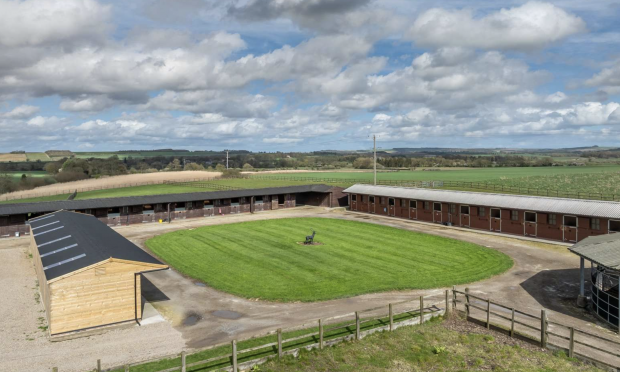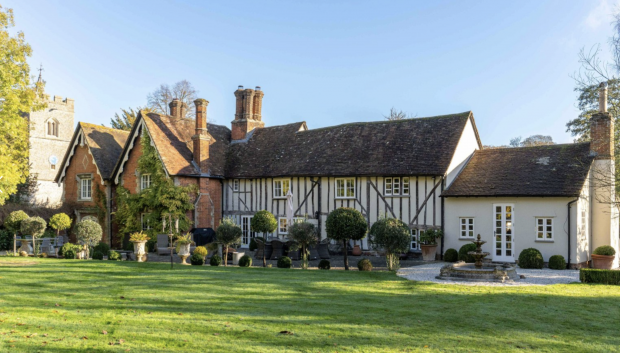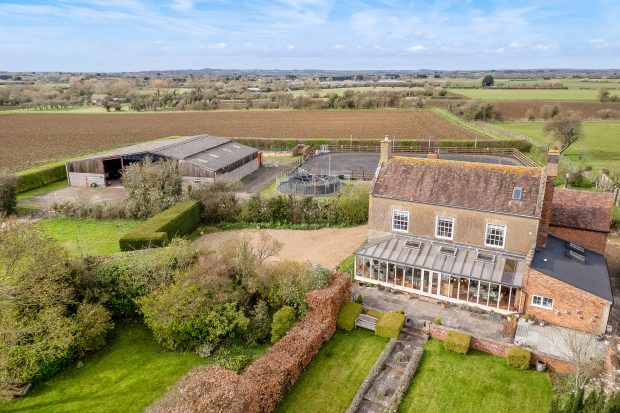As Britain prepares to face the coldest winter for years, dreams of a weatherproof property become irresistible. The most obvious way to ride out the bad weather is to invest on a property with a reasonably big indoor school — or with a large building that can be converted into one.
“If you had the money, you’d go for 50x30m because you want it bigger than the minimum size for a dressage arena,” says equestrian architect Keith Warth.
The perfect indoor arena should have sliding doors, a waxed all-weather surface, and 1.8m high kickboarding to protect the rider and horse from hitting the steel frame.
Central heating is not a requirement but “what you may need to do is heat the spectator area”, suggests Warth. In this case, infrared heating, which warms bodies without heating up the air, is the most sensible choice.
But houses with indoor arenas are very rare, and planning authorities are often reluctant to grant consent to build one. The easiest alternative is to go for a good quality all-weather manège, which will at least ensure mud-free riding.
When building an arena from scratch, choose a level site that is not too damp and is preferably sheltered by trees to keep the wind out. But even the very best site can turn into a squelching muddle if drainage is poor.
“Make sure the drainage is adequate for your site,” advises Linda Wright from Charles Britton Equestrian Construction.
The surface is up to each rider’s preference, but it is important to find something that will work equally well in winter and summer.
“People often think of winter, but summer care can be the greater problem,” says Wright, who urges riders to keep the surface working properly during cold weather. “Whatever the surface, it will be less affected by frost if you level as late as possible in the evening of an expected frost.”
Buyers should try to view properties with an existing manège after it has rained to check for puddling and mud. And if the school is floodlit, so much the better, because getting planning permission to install lights can be extremely hard.
“If you must have lighting, be sure the planners in the area you are considering will allow it,” says Wright.
It is also worth investigating the cost of a covered horsewalker or covering an outdoor school with a temporary structure.
“Because a covered school is not seen as a permanent building, no planning permission is needed,” says Diana Rowell of Churchill Country & Equestrian.
Winterproofing an equestrian home goes beyond securing a reasonably dry ride. American barn-style stables are “good for every weather,” according to John Noble of Rural Scene.
Rowell, who also likes American barn stabling, says: “Make sure the horses can see out and that you have good air circulation.” It’s crucial to keep a window open in the stable while avoiding draught directly on to the horse.
British riders have no need to heat their stables but “it’s useful to have a box with infrared heating for sick animals. You should also heat your foaling box with infrared,” says Warth, who recommends trace heating water pipes to prevent them from freezing.
Buyers should watch out for details that risk getting overlooked. It is pointless to have a mud-free arena if the path that leads there is covered in dirt.
“Make all-weather paths to your muck heap, outdoor school and turnout areas,” recommends Rowell.
Hot water and heat lamps in the yard help prevent horses catching a chill when washed off, while a covered — and preferably heated — drying area helps rugs dry out quickly. And although horses don’t mind the cold as much as humans do, it is important to protect them from wind and rain with field shelters.
Rowell has one last piece of advice: “Service your horsebox. Breaking down is never fun, but least of all on a cold, dark road with a full load of dirty, cold and tired hunters.”
Find your ideal equestrian property with our online database >>
|
||
 |
||


 Get up to 19 issues FREE
Get up to 19 issues FREE TO SUBSCRIBE
TO SUBSCRIBE 



